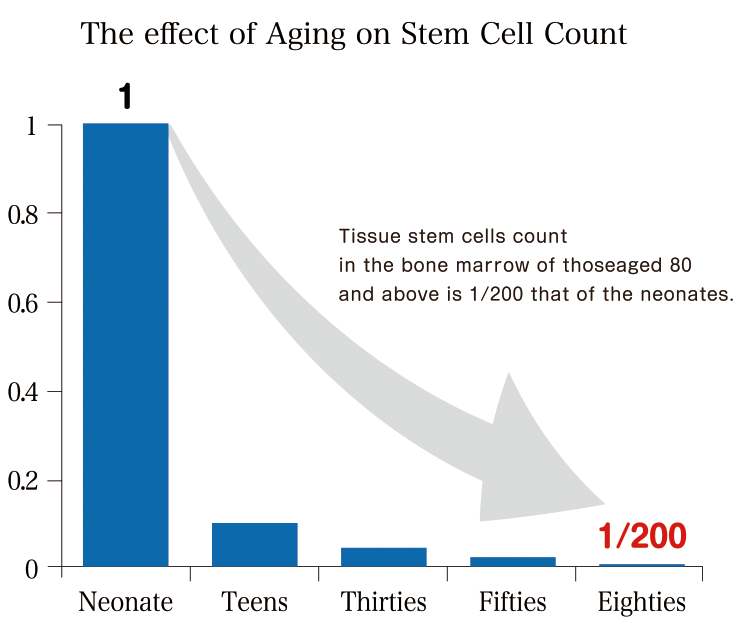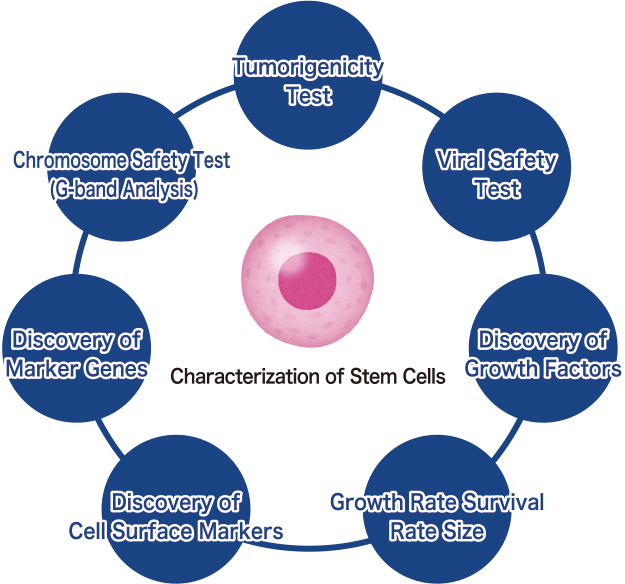Regenerative medicine
and stem cells.
■What is regenerative medicine?
Regenerative medicine is a treatment method which seeks to restore the functions of tissues and organs that have become incapacitated as a result of an illness or an accident. The regenerated tissues or organs are then transplanted into the patient so to restore the lost or damaged functionalities.
At our Clinic, we conduct the Stem Cell Regenerative Treatment by cultivating adult stem cells extracted from your own adipocyte, which are then inserted to your own body, thereby achieving improvements to your condition. Because the stem cell is extracted from your own adipocyte, this treatment is said to be a highly reliable and safe method with low risk of rejection.
■What are stem cells?
Our body consists of about 60 trillion cells. It comprises more than 200 types of cells, and every one of these begin with a single fertilized egg. This single cell divides over and over again in its multiplication. These cells become specialized with specific assignments according to the functions of the body such as the muscles and the nerves. However, there are cells that remain unspecialized and have the potential to transform into other cells. These cells are called “stem cells”.
In its process of transformation stem cells specialize, with each cell type acquiring its own unique shape and function appropriate for its job. For example, muscle cells make up muscles, while nerves are made up of nerve cells, with each group of cells having its unique role, multiplying and specializing continuously.
* As you see in Figure 1, stem cells have the ability to produce and replace cells in order to maintain organs made up of cells with a short lifespan, such those that make up the skin and blood. It also has the ability to repair cells and supplement those functions that were lost as a result of injury or illness. Thanks to stem cells and its special abilities, we are able to grow from a fertilized egg and can maintain the functions of our body after becoming a grown up.

■The relationship between aging and stem cells.
As the body develops and ages the number and type of cells change. By the time we enter our 80s, the tissue stem cells found in the bone marrow will be reduced to about 1/200 of what we were born with. This is to say that one of the causes of ageing is the depletion of stem cells.

System of safety and security
Applied to actual stem cells treatment
■Safety and significance of stem culture
- 1/Difference between serum free culture and serum media
- One of the main concerns in culturing of stem cells is to do with the serum added to the culture medium. Serum is necessary both to promote as well as to control the proliferation of cells in a way that is biologically balanced. However, there are several problems with the use of serum as it is a complex mixture of biological elements and it can be contaminated with certain risk factors or cytotoxic factors. There is also the potential of it causing an allergic reaction and the risk of not knowing where the serum actually came from.
- 2/Culture method in the serum free culture media
- In order to eliminate the risks associated with the use serum, we seek for the proof of origin of primary raw materials of the culture media used and cultivate cells in the serum-free culture media.
- 3/Characterization of stem cells

